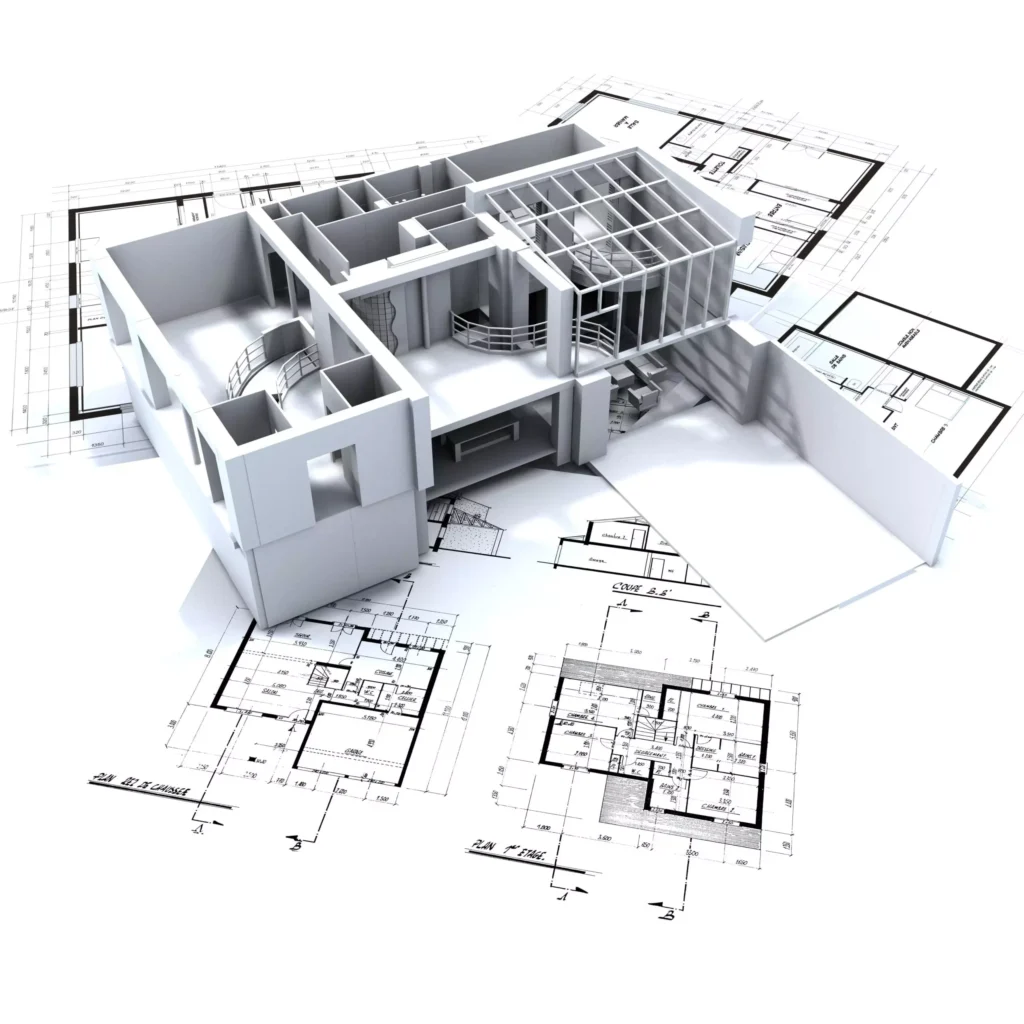Architectural design has witnessed a significant transformation over the decades, transitioning from traditional drawing boards to advanced digital platforms. Among these platforms, Computer-Aided Design (CAD) stands out as a revolutionary tool. CAD has redefined the way architects, engineers, and designers conceptualise, plan, and execute building projects.

What is CAD in Architectural Design?
CAD refers to software applications used to create precise drawings and models of structures, landscapes, or interior designs. These programs allow architects to visualise their ideas in 2D or 3D formats, enabling detailed planning and error minimization. Popular CAD software includes AutoCAD, Revit, SketchUp, and ArchiCAD.
Advantages of CAD in Architecture
- Accuracy and Precision
CAD software eliminates manual draughting errors by providing exact measurements and scalable designs. The precision ensures that every component aligns perfectly, reducing miscalculations. - Time Efficiency
Traditional architectural designs could take weeks to finalise. CAD accelerates the process, allowing professionals to draft, revise, and finalise designs in significantly less time. - Enhanced Visualization
3D modelling features enable architects and clients to explore virtual walkthroughs of a project. This immersive experience helps stakeholders understand the design’s aesthetic and functional aspects. - Streamlined Collaboration
CAD designs can be easily shared across teams and integrated with other software. Cloud-based CAD tools enable real-time collaboration, ensuring seamless teamwork. - Cost Reduction
Identifying potential flaws during the design phase minimises costly alterations during construction. This predictive capability saves resources and time.
Applications of CAD in Architectural Design
- Residential Architecture
CAD software aids in designing homes with precise layouts, including floor plans, elevations, and interior details. - Commercial Architecture
Large-scale projects like malls, office spaces, and industrial facilities benefit from CAD’s ability to handle complex designs and requirements. - Landscape Design
Architects use CAD tools to design outdoor spaces, integrating natural elements like gardens, water features, and pathways with the built environment. - Urban Planning
CAD aids in planning entire neighbourhoods, considering aspects such as road networks, zoning regulations, and public spaces.
Key Features of CAD Software
- Parametric Modeling
Allows designers to make changes to one element and automatically update related components, maintaining design consistency. - Rendering and Animation
Advanced CAD tools offer photorealistic rendering, making it easier to visualise how a structure will look in real life. Animation features provide dynamic presentations of designs. - Layer Management
Organising designs into layers helps architects focus on specific aspects, such as electrical layouts or plumbing systems, without disrupting the overall plan. - Libraries and Templates
CAD software often includes extensive libraries of pre-designed elements, such as furniture, windows, and doors, simplifying the design process.
Challenges in Using CAD for Architectural Design
- Learning Curve
Mastering CAD software can be time-consuming and requires specialised training. - Cost
High-quality CAD tools can be expensive, posing a barrier for small firms or individual professionals. - Hardware Requirements
Running advanced CAD software requires robust computer systems, which can add to the costs. - Dependence on Technology
Technical glitches or system failures can disrupt work, emphasising the need for reliable backups and updates.
The Future of CAD in Architecture
As technology advances, CAD is evolving to incorporate features like artificial intelligence (AI), virtual reality (VR), and augmented reality (AR). These innovations are expected to further enhance the design process, allowing architects to create more efficient, sustainable, and innovative structures.
- AI Integration: AI can automate repetitive tasks, suggest design improvements, and analyse structural integrity.
- VR and AR: These technologies offer immersive experiences, enabling architects to present their designs interactively.
- Sustainability Features: Modern CAD tools include features to analyse energy efficiency and environmental impact, promoting eco-friendly designs.
Best Practices for Using CAD in Architectural Design
- Start with Clear Objectives
Define the project’s goals and requirements before beginning the design process to streamline workflow. - Invest in Training
Regular training ensures that professionals stay updated with the latest features and tools. - Use High-Quality Hardware
Invest in a system that can handle the demands of CAD software without lags or crashes. - Leverage Collaboration Tools
Use cloud-based platforms for real-time collaboration and version control. - Regular Backups
Maintain backups to prevent data loss during unexpected technical failures.
Conclusion
CAD architectural designs are no longer just tools for visualisation; they have become integral to the construction process, shaping the way buildings are conceived and built. By offering precision, efficiency, and creativity, CAD has empowered architects to push the boundaries of design. As the industry continues to embrace digital innovations, the role of CAD will undoubtedly become even more pivotal in creating the structures of tomorrow.


Pingback: Top Architects in Coimbatore